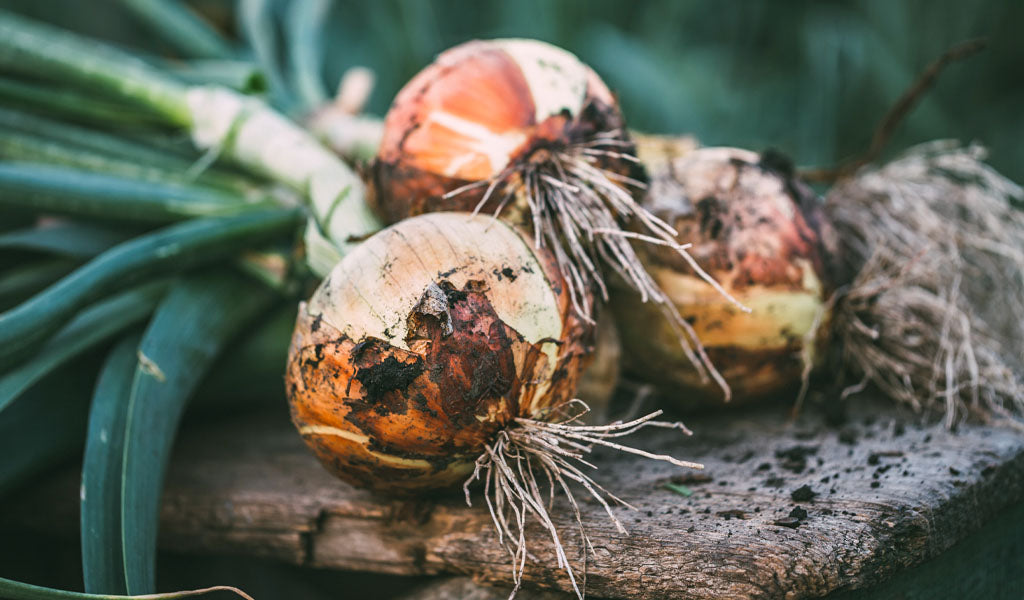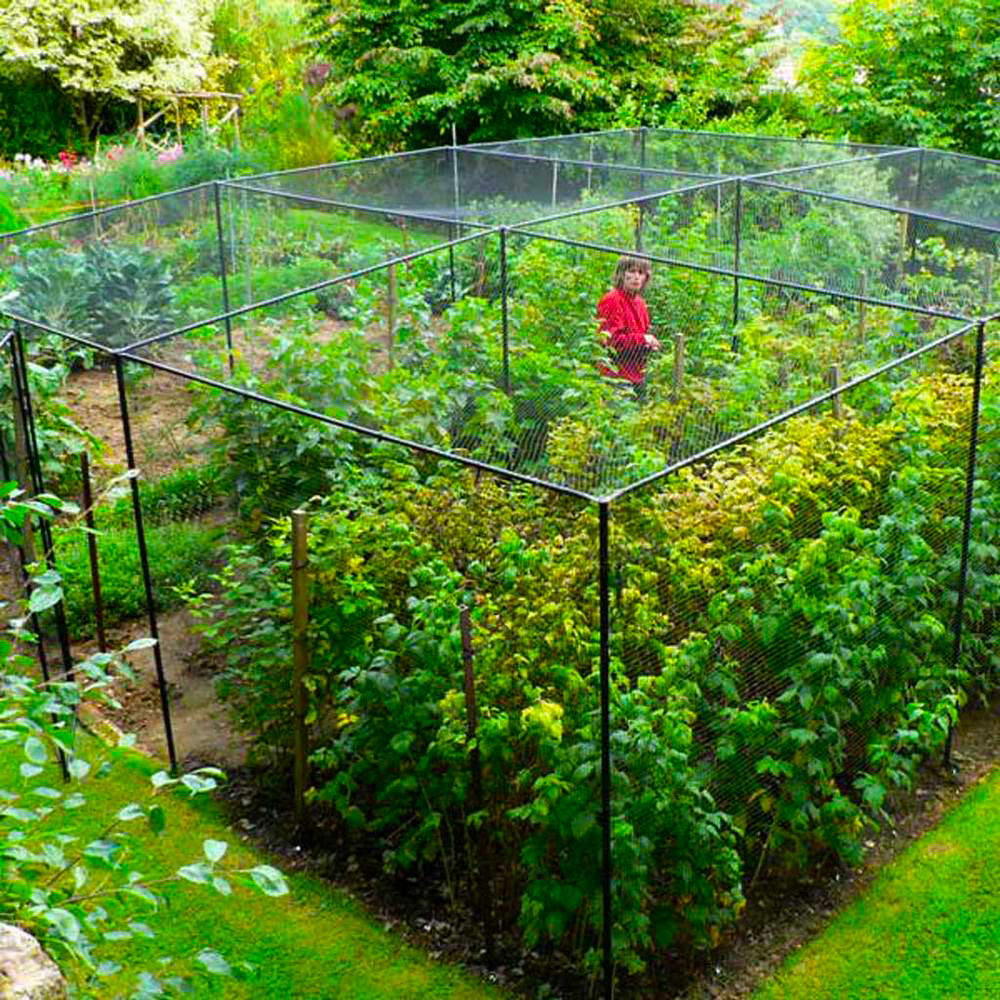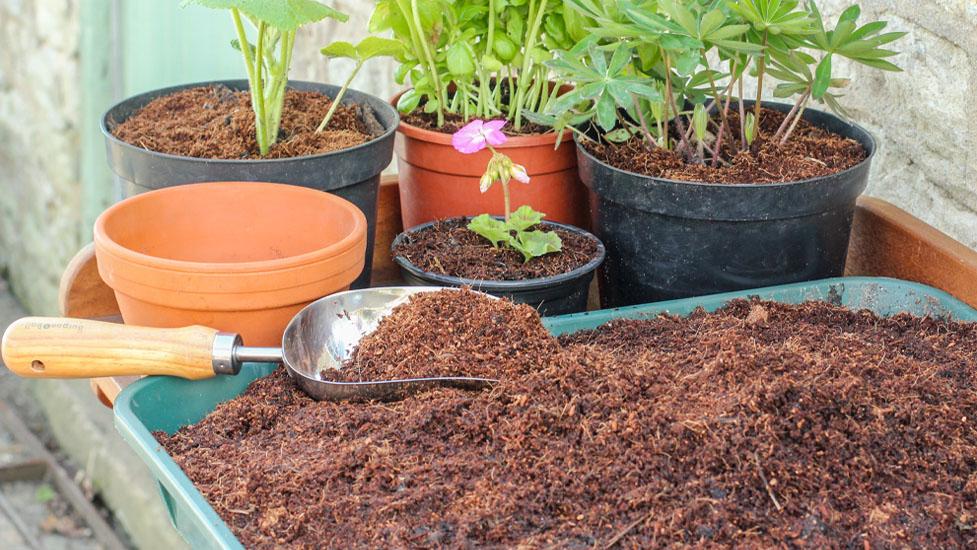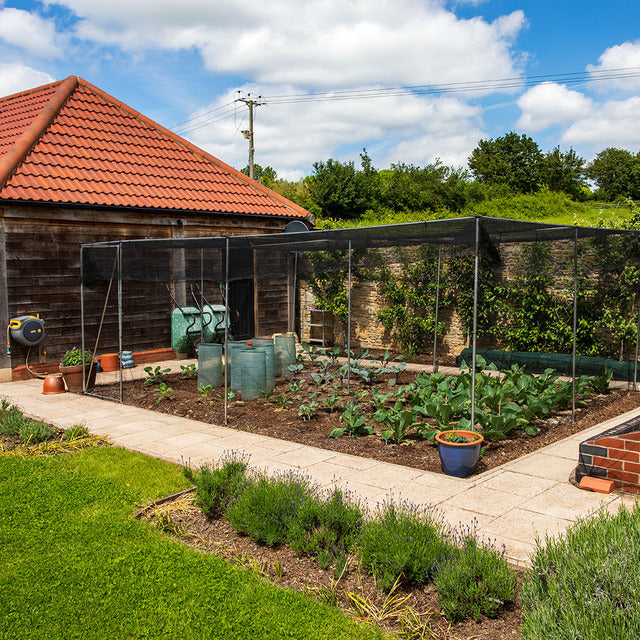You may feel that Onions are not a crop worth growing - they are cheap to buy and often a supplementary ingredient rather than centre stage - But they are a satisfying crop to harvest and take up very little room so worth adding to your planting plan. Also, don’t forget spring onions; they are tremendous in salads and can be cropped over most of the year by staggering your sowings.
Best of all, any you don’t use as spring onions turn into superb-quality red or white bulb onions, so you have the best of both worlds. The one thing you must do with onions of any kind is keep on top of the weeding.
When To Grow
A short row of spring onions every 3-4 weeks from early March to late July, then use an overwintering spring onion variety to sow August to mid-October. Sow thinly and thin out if seedlings are overcrowded.
For bulb onions, you can sow maincrop (summer) onions in March, and overwintering onions in August, but frankly it’s easier to grow both from onions sets (small bulbs) instead. Onion seed is relatively short lived and needs to be sown fresh.
Plant maincrop (summer) onion sets in March/April, and overwintering onion sets in September/October.
Thin spring onions out to 2.5cm (1in) apart, and allow 15cm (6in) between rows – just enough to run a hoe between. Plant onion sets 10cm (4in) apart, in rows 20cm (8in) apart.
Aftercare
Keep Watering
Keep plants watered in dry spells so they don’t suffer a check to their growth, which may encourage bulb onions to bolt. Weed regularly as the plants don’t survive being smothered.
Three-in-one Spring Onions
If you initially sowed spring onion seeds too thickly, you can have three slightly different forms of onion from the same row. When the seedlings come up and reach the grassy stage, thin them out by pulling up alternate young plants and use those as baby spring onions, or as chives. As the rest grow, rather than pulling out whole rows from one end to the other, keep thinning out alternate plants to use as spring onions.
The remaining plants will keep growing and any that are still left after a few months will produce perfectly good bulbs that are mild enough to use chopped in salads, to put in the juicer with tomatoes and carrots to give you vegetable juice more ‘bite’, or for normal cooking.
Harvesting & Storage
Spring onions are ready as soon as they are big enough to use; spring-sown crops are ready June/July until September, overwintering spring onions sown in September/October are ready between February and May/June.
Maincrop onions are ready in August/early September. Bend the tops over once the leaves start naturally turning yellow or brown to assist ripening; lift the bulbs when completely ripe and leave them on the ground in the sun to finish drying before storing in shallow trays in an airy shed.
Overwintering onions are ready to use fresh from the ground from the time the first few reach useable size around mid-May, then keep pulling them as needed until late July.
Most varieties will keep in good condition to use from September until February. Keep them in the light to avoid sprouting (unlike potatoes which need to be kept in the dark). Overwintering onions don’t keep for more than a month or so after you take them out of the ground, so don’t attempt to store them for long.
Pests & Diseases
As with garlic and leeks, bolting is a problem in some seasons, and this is thought to be due to particular sequences of fluctuating temperatures. Choose a bolt-resistant variety and, where possible, buy heat-treated sets, which reduces the risk of bolting.
Mildew is a white or grey fungal growth which is disfiguring or debilitating, cut off affected foliage and do not store affected bulbs.
White rot is quite common in onions, including spring onions, and it also affects leeks, although less so than other members of the onion family. Affected plants initially have foliage that turns yellow, then they develop white cotton-woolly clumps near the base in which small, black blobs can eventually be seen.
It rapidly spreads between neighbouring plants, and the fungal organism remains in the soil for many years, affecting other onions. There is no cure; destroy affected plants foliage – don’t put it on the compost heap – and grow onions elsewhere. It’s good practice to move onions and their relatives to a new site every year to minimise disease risk.





